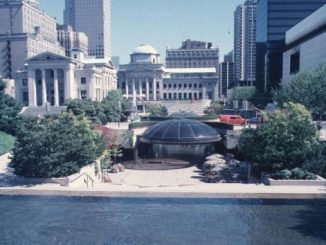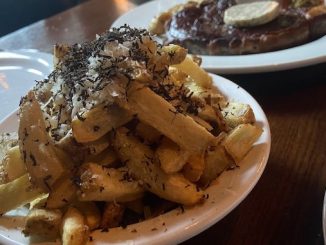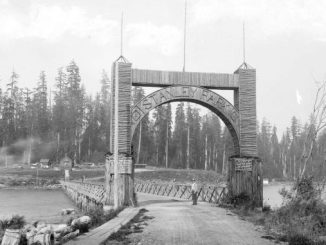Vancouver is known for a lot of things. Its never-ending rain, sprawling mountain ranges, or the iconic three-note chime of the SkyTrain as its doors close. Yet the fire that razed the young city to the ground mere months after its incorporation doesn’t usually come to mind. It’s a shame, because it’s an interesting story that includes street names and landmarks that are iconic to the Vancouver we know today. Plus, there’s no better place to start with the city’s history than the time it almost ceased to exist overnight. So let’s head into the archives and take a look at the Great Vancouver Fire of 1886!
Please visit the Vancouver Archives to find more amazing old photographs from the city’s past.


Like much of Canada, Vancouver’s history begins with the Canadian Pacific Railway (CPR) and the six block township of Granville along the Burrard Inlet in 1870. The modest town came to tout a handful of shops, pubs, and a hotel across Hastings, Carrall, and Cambie Street. While they primarily serviced nearby mill workers, Granville was also a pit-stop for passing fishermen and sailors on their way to Moodyville—known today as North Vancouver.
In 1885, Granville hit its big break. Thanks in part to its waterfront views, the CPR chose Granville to be the site of its transcontinental terminus station. The news came as a disappointment to the nearby towns who were also in the running, Port Moody and New Westminster. Nevertheless, a year later in April 1886, the township was renamed and formally incorporated as British Columbia’s fourth city: Vancouver.
The future looked bright for Vancouver. The railroad secured the colonial government’s (unfounded) claims to the land and guaranteed economic growth and an influx of settlers. Malcolm MacLean became the first mayor of Vancouver on May 6, 1886, and the city marked what is now East Van and the West End for future development. By all accounts, while flowers blossomed during the spring, Vancouver seemed to be doing the same.




Or at least it appeared so. On an otherwise quiet Sunday in June 1886, a small CPR crew was burning leftover logging debris in the West End when a sudden wind picked up. Due to an unusually hot and dry spring season, what began as a controlled burn erupted into a raging inferno almost instantly. The bells of St. James Church on East Cordova and Gore Avenue rang out to alert the city, but it was too late. The fire consumed Vancouver in a matter of minutes. At least 8 people died, with some estimates suggesting that it was as many as 28. Survivors grabbed what belongings they could and fled to the Burrard Inlet shore and False Creek. Helpless, they watched in horror as almost every building in Vancouver burned to the ground in under an hour.


What followed was a spectacular display of camaraderie and support. Using tents and what few buildings were still standing, citizens established emergency shelters. With support from nearby towns, local indigenous peoples, and the federal government, businesses reopened within two weeks. Vancouverites bustled along Cordova, Carrall, and Abbott Street again, bringing a sense of normalcy to the grieving city. At the six-month mark, some 500 buildings had been rebuilt—this time with less wood and more brick. Vancouver’s population grew just as rapidly, peaking at 20,000 people by the end of the century. It was a vastly different city than the small settlement it started out as in the 1860s. Against all odds, it became the stunningly beautiful Vancouver we know today—SkyTrain chime and all.
Please visit the Vancouver Archives to find more amazing old photographs from the city’s past.



